OUR GLOBAL CHALLENGES Kyosha Co., Ltd.
Equipped with state-of-the-art machinery utilizing IT and automation, its Vietnam plant is now in full operation. Aiming to become a top global niche manufacturer, Kyosha is responding swiftly to changes in demand and accelerating overseas expansion, a strategy it pioneered.
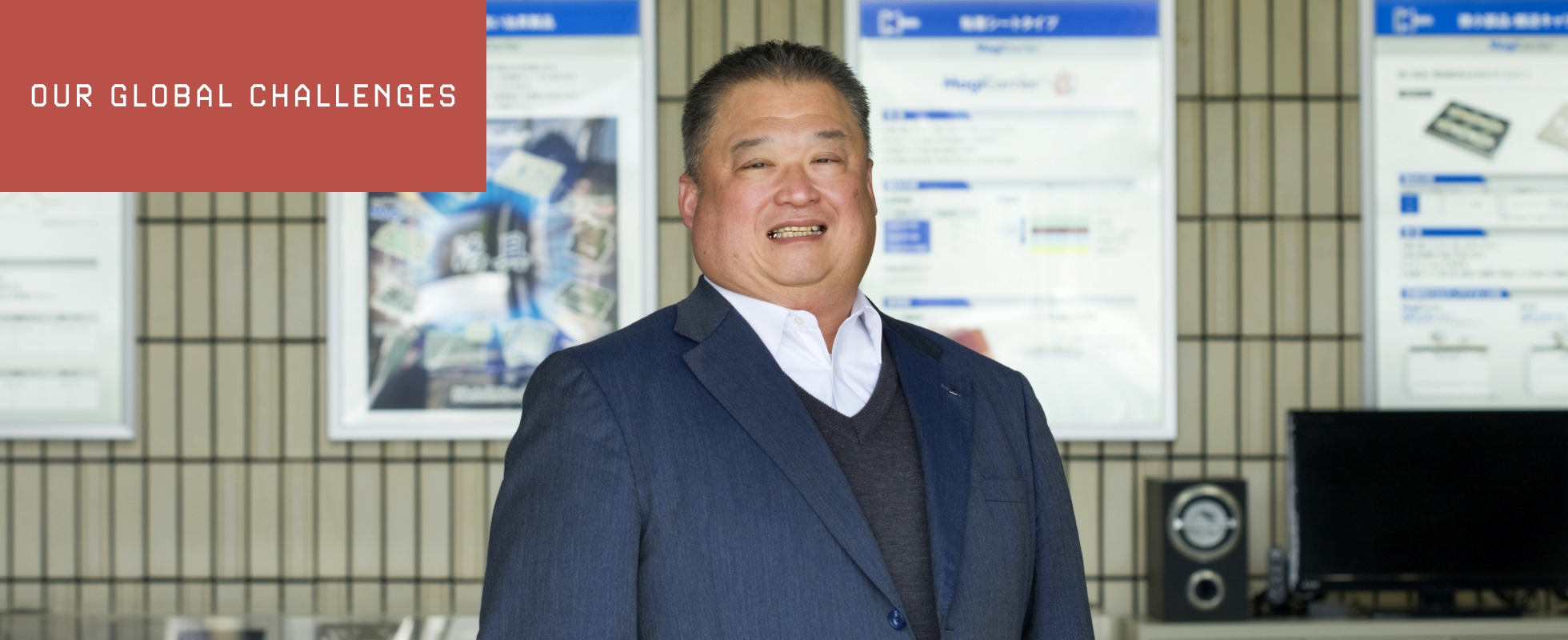
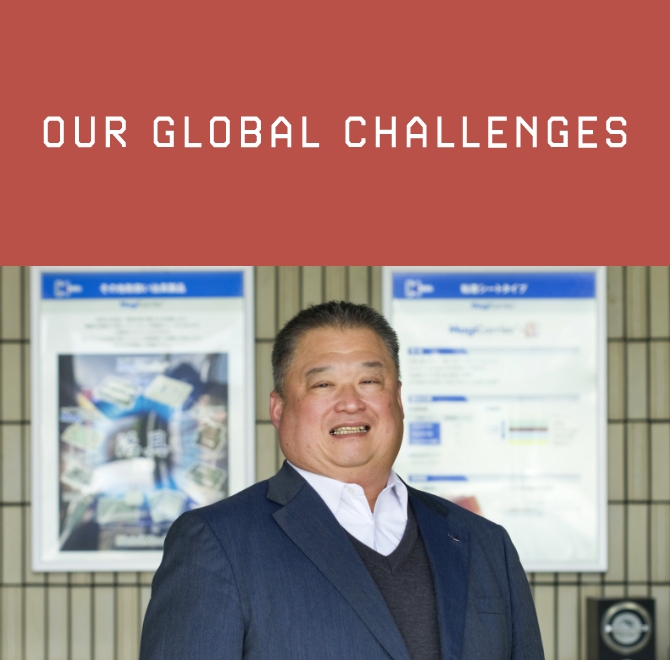
Kyosha Co., Ltd. Representative Director and President
KOJIMA Kazuto Joined the company in 1996, and after serving as head of subsidiaries in the United States and Mexico, became president in 2009. Always keeps a global perspective central to his growth strategy. Valuing communication within the company, he frequently visits the factories, and listens to the voices of employees.
Applying the printing technology of traditional crafts to shift the business to large household appliances
From televisions and air conditioners, to personal computers, smartphones, automobiles, and airplanes, printed wiring boards (PWBs) are indispensable. A PWB is a substrate on which many electronic components are mounted to create electronic circuits.
Kyosha is the world’s top manufacturer of single-sided PWBs, which have an electronic circuit only on one side. The company was established in 1951 as a manufacturer of screens for textile printing in a traditional dyeing method called Kyo-Yuzen. Using the manufacturing technology cultivated in the textile industry, in 1967, Kyosha began manufacturing and developing PWBs.
Currently, in addition to its core PWB business, the company is expanding into the fields of electronic component mounting and jigs for mounting components. A PWB displayed at the company’s head office in Kyoto had beautiful patterns, just like an exquisite work of traditional craftsmanship.
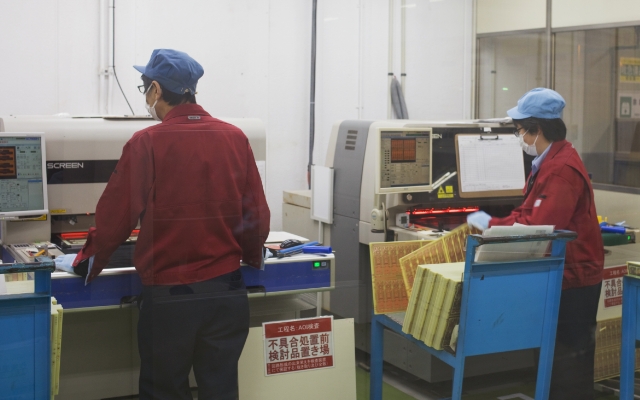
Global leader in single-sided PWB production (Photo is the plant at the Kyoto headquarters)
“This all began when our founder went on an overseas study trip and learned of a company that uses dyeing technology to manufacture PWBs,” says KOJIMA Kazuto, the third president of Kyosha.
“The textile industry in Japan was showing signs of a downturn, but large household appliances were selling well at that time, so he decided to enter that market. There are various types of PWBs. Making high value-added products requires intensive capital investment and extensive financial resources. That is why we decided to initially focus on the most basic product, the single-sided PWB.”
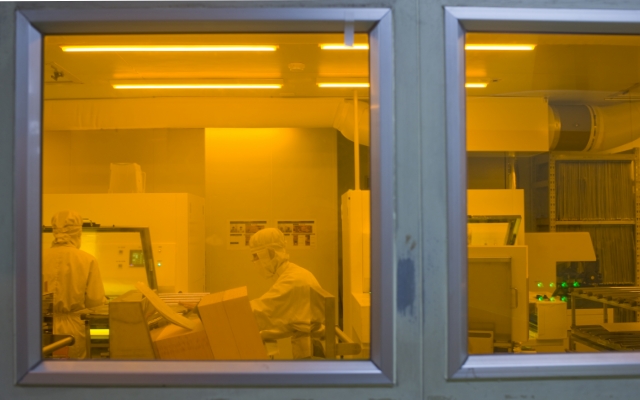
Work is conducted while carefully confirming each step of the process under thorough quality control. (Plant at the Kyoto headquarters)
Leading the industry in overseas expansion. Capitalizing on failure to change direction
In addition to the plant in Kyoto, the company established a production base in Kumamoto in 1972 to fortify its foothold in the market. At the time, the company was producing PWBs for cathode-ray tube televisions and other large household appliances, but domestic consumer electronics manufacturers were beginning to relocate their factories overseas. Anticipating growth in demand from those offshored plants, the company decided to expand its business overseas, ahead of its competitors.
The company's first overseas foray was the establishment of a joint venture in Hong Kong in 1993. “When our second president, currently our chairman, went to China on a study tour, he found a good business partner through a lucky encounter with a person who happened to be sitting next to him on the plane,” says KOJIMA with a hearty laugh. The company then established production bases in Guangzhou, China, and Indonesia.
But it had a bitter experience when it set up business in Mexico in 1998. The popularity of flat-screen TVs and subsequent changes in the business environment led to a decline in PWB orders, and adding to this blow was the soaring cost of local labor. The company then decided to focus on making products for the auto industry, which is a very stable sector, and eco-friendly consumer electronics, which has growth potential. To meet increased demand for the double-sided PWBs used in these products, the company decided to make Vietnam its manufacturing and export base for them because that is where auto parts manufacturers are expanding their operations.
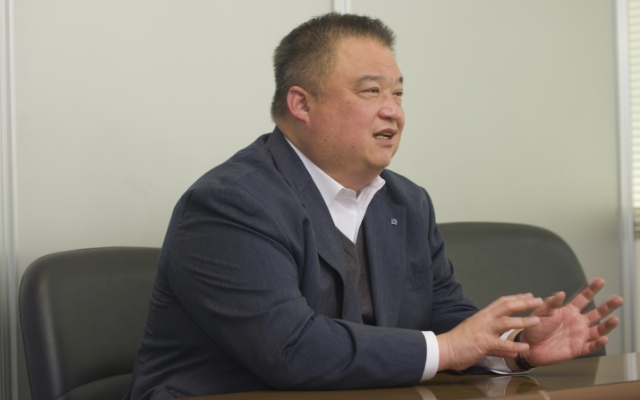
KOJIMA Kazuto, Representative Director and President, speaks openly and with a smile about how the business developed from its foundation by his grandfather to the present day.
It is no longer the age of cheap labor. A cutting-edge production center in full operation
The Vietnam plant, which mainly produces double-sided PWBs for the auto industry, was completed in March 2020. It is a cutting-edge production base with state-of-the-art machinery and robots. “It is no longer the age of going overseas because of low labor costs. Labor costs will probably rise soon in Vietnam as well. This makes factory IT and automation crucial.”
One of the company's aims in expanding to Vietnam was to diversify risk by its dependency on sales in China. Compared to Mexico, where exports are limited to the United States, the attraction of Vietnam was not only its rapidly growing market of some 100 million people, but also its function as an export base. The establishment of the new Vietnam plant was based on a “decision looking to the future” to raise sales in Southeast Asia, including Vietnam, to the same size as that of Japan and China.
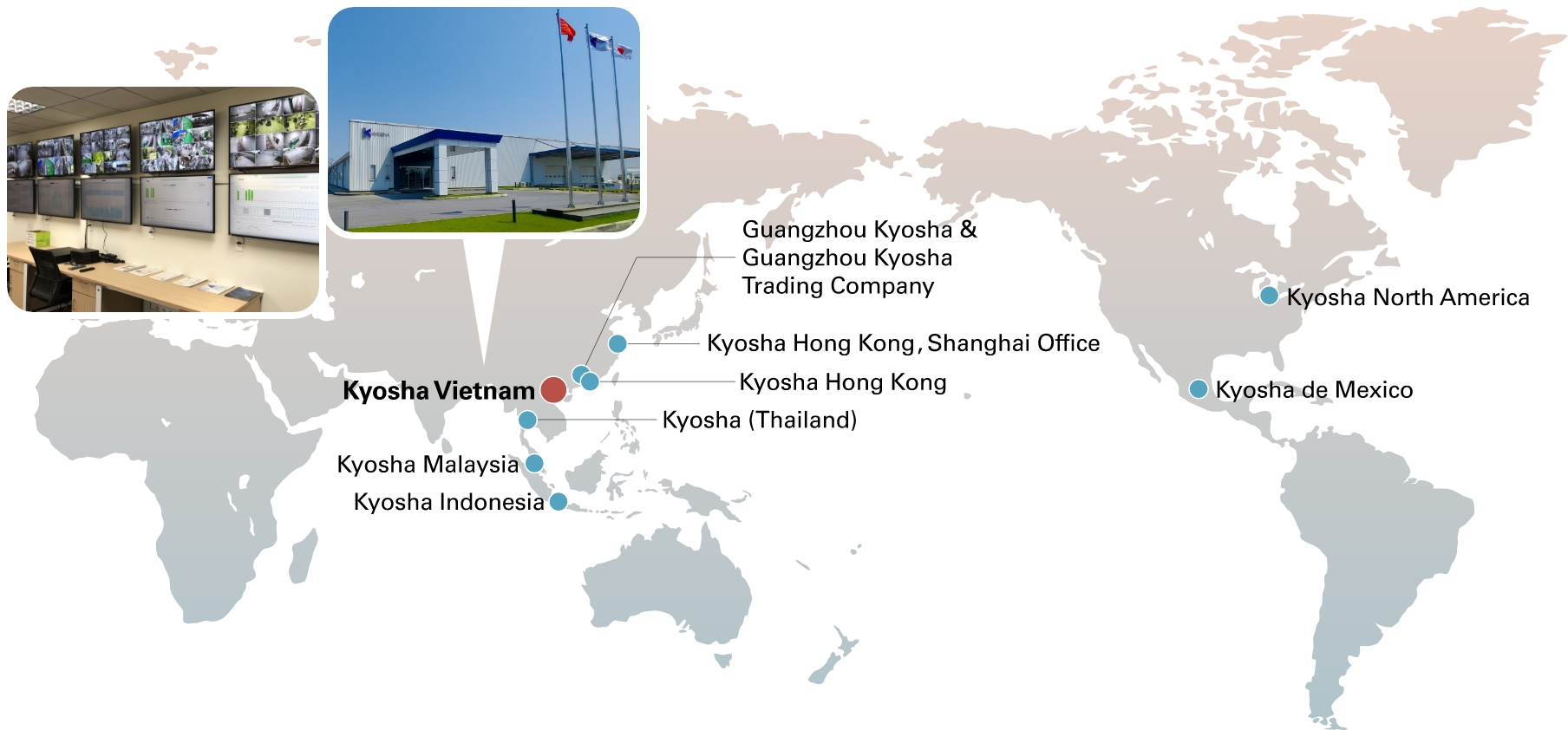
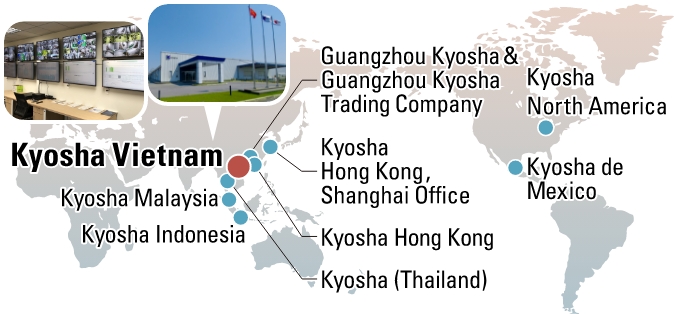
Straddling the Pacific Ocean, a production and marketing system has been built around the world—in China, Southeast Asia, North America, and Latin America. IT is used for the autonomous management of the Vietnam Plant. (Photo right: exterior; Photo left: system control room)
“The launch of the plant was halted because of the COVID-19 pandemic. But the delivery date for products to auto parts manufacturers was fast approaching. So, when we heard that a chartered flight was going to Vietnam, we sent our employees there from Japan. By communicating with the machinery manufacturer via smartphone, they managed to get the plant up and running.” An efficient production system on a 150-meter-long production line was built, with functions surpassing that of the plants in Japan. In July 2023, a second production line will come on line, bringing the plant to full operational capacity. A loan from JBIC was also used here.
Work that would usually be outsourced in Japan is, in Vietnam, integrated into the plant's work. The entire process has to be done in-house since a supply chain has not been established, but this has been well received by parts manufacturers who prefer integrated production. In addition to the plant's location in a well-equipped Japanese industrial park, the plant also draws strength from its personnel—former technical intern trainees who studied in Japan and speak Japanese.
At the core of the company's mission to build a global production and supply system is KOJIMA's vision of “becoming first-class” and the slogan of “Build Trust.” “A relationship of trust with suppliers, customers, and among the employees is indispensable for the growth of the company. We can only create trusting relationships by striving to improve ourselves with the aim to be the best.” The company maintains the same approach at home and abroad as it continues on the path to becoming a leading global niche manufacturer.
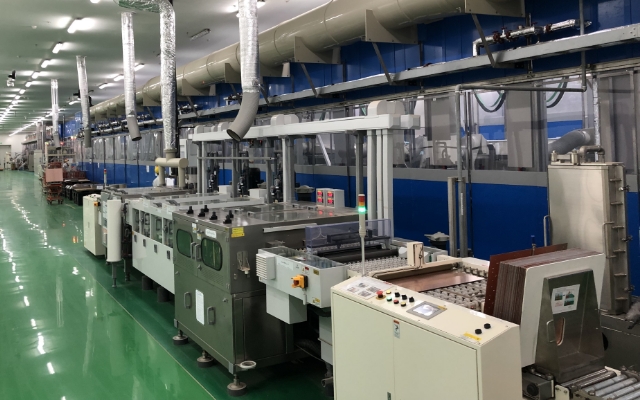
With installation of state-of-the-art machinery, the company aims to further expand its business fields and grow even more. (Vietnam plant)
Kyosha Co., Ltd.
| 1951 | Company established |
|---|---|
| 1967 | Began manufacturing and developing printed wiring boards |
| 1993 | Established what is currently Kyosha Hong Kong |
| 1994 | Established what is currently Guangzhou Kyosha in Guangzhou, China Established what is currently Kyosha Indonesia |
| 2010 | Established Kyosha (Thailand) |
| 2019 | Established Kyosha Vietnam |









